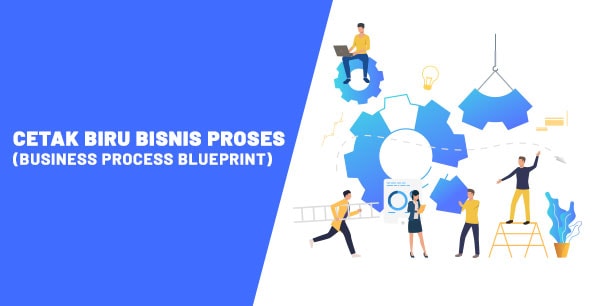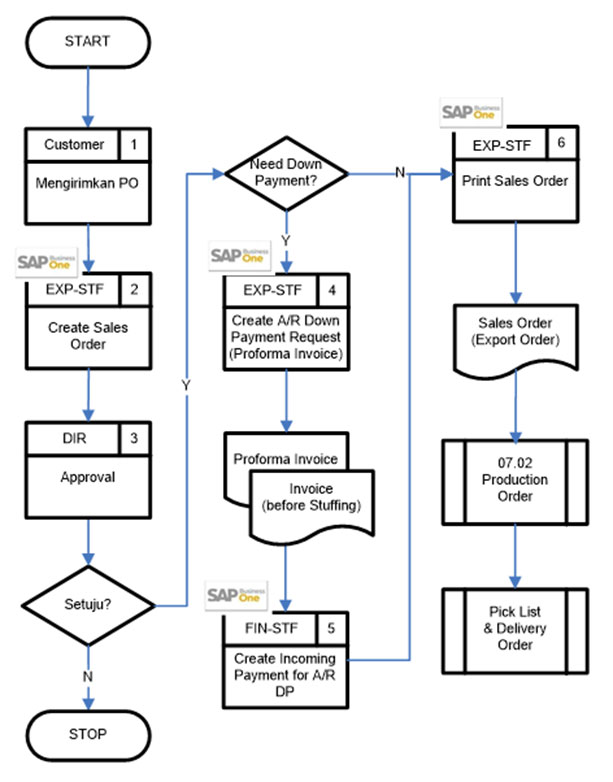After going through the project preparation period where support from top level management and what expectations will the company get with the new ERP system, it is likely that the project can run smoothly.
The next thing that is one of the keys to a successful ERP system implementation is existing business processes in your company.
At this stage, we will discuss about blueprint of the existing business processes in the company, which will be used to design and build the ERP system that will be used.
The purpose of this discussion is so that the consultant or anyone who helps you can understand exactly what is happening now, and the needs of the company going forward.
Important things to consider when designing a blueprint:
Determine a schedule for discussions with related parties, for example to discuss the purchasing process, there must be a purchasing department and also accounting as part of the supervision.
Often also the warehouse or people from receiving team are included so they can understand the work of the previous section.
Thus, if there are operational problems, the warehouse can be immediately coordinate and resolve.
It is therefore important to have a detailed schedule for the topics to be discussed and what department will be attending and who will be.
TIPS:
Blueprint discussions must involve related parties or it can have fatal consequences, for example only involving users who do admin, even though decisions must be made by the purchasing manager.
This will result in incorrect decision making or the process that is designed and documented will be different from the reality.
Or a decision is made unilaterally by the purchasing party, even though the warehouse has an interest.
For example, the purchasing party negotiates with the supplier to be able to accept more goods with a tolerance of 10%, but the warehouse does not know the policy.
Formal meetings are the best format for designing a blueprint for the process to be built.
Because of the busyness of users and management, in some ERP implementations, there is a request that it is sufficient to use user interview format when creating a blueprint and doing the interview one by one.
This format is very ineffective and can be misleading, because information from one section to another is difficult to confront directly.
So that it consumes a lot of time and often occurs miscommunication.
Not to mention that if an existing process is to be changed or improved, it will be difficult to have an agreement in a short time.
Once again, a commitment is needed not only from top level management but also from all teams involved in the ERP implementation project.
Formal meetings are the best format for designing a blueprint for the process to be built.
Because of the busyness of users and management, in some ERP implementations, there is a request that it is sufficient to use user interview format when creating a blueprint and doing the interview one by one.
This format is very ineffective and can be misleading, because information from one section to another is difficult to confront directly.
So that it consumes a lot of time and often occurs miscommunication.
Not to mention that if an existing process is to be changed or improved, it will be difficult to have an agreement in a short time.
Once again, a commitment is needed not only from top level management but also from all teams involved in the ERP implementation project.
It is very important to documented all discussion result into a blueprint
because all designs and decisions taken must be documented for use in further activities such as system testing, or if there are things that are asked again, it can directly refer to the decisions that have been taken.
Incomplete documentation in the ERP implementation process will result in repeated discussions and this can lead to different decisions each time discussing the same thing.
7 point kunci lainnya yang berpengaruh pada kesuksesan implementasi ERP System:


